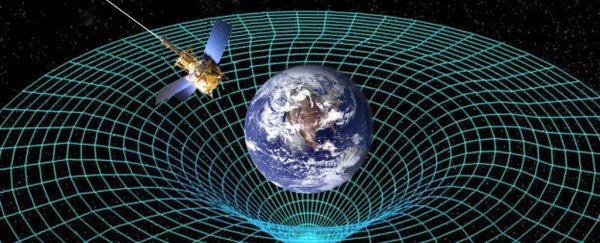Yesterday, the physics community got hyped-up over rumours that scientists might have finally detected gravitational waves - ripples in the curvature of spacetime predicted by Einstein 100 years ago - and that their observations could be coming to a peer-reviewed journal near you soon.
So far, our understanding of how gravity affects the Universe has been limited to observations of natural gravitational fields created by distant stars and planets. In fact, gravity is the last of the four fundamental forces that humans haven't figured out how to produce and control. But now André Füzfa, a mathematician at the University of Namur in Belgium, has published a paper proposing a device that could do just that - albeit in tiny doses. And it wouldn't require any new technology.
Let's be clear, we're talking about incredibly small gravitational fields here, not the type of 'artificial gravity' that's used throughout science fiction to keep characters on shows like Star Trek and Battlestar Galactica walking, not floating, around spacecraft. As yet, that technology isn't possible.
But being able to produce incredibly weak gravitational fields would still be incredibly exciting from a scientific point of view, because it would allow physicists to actively study gravity for the first time, and really test out Einstein's general theory of relativity. It could even lead to new technology, such as forms of communication that are based on gravity instead of electromagnetic waves.
"Somehow, studying gravity is a contemplative activity: physicists restrict themselves to the study of natural, pre-existing, sources of gravitation," writes Füzfa in the paper. "Generating artificial gravitational fields, that could be switched on or off at will, is a question captured or left to science-fiction."
The theoretical device he's proposed is based on large superconducting electromagnets, like the kind currently used in the Large Hadron Collider, to generate well-controlled and very strong magnetic fields that would allow physicists to observe the way these magnetic fields bend spacetime.
Füzfa's method hasn't been experimentally tested, so we can't get too excited about it just yet, but he's done the maths behind the proposed device, and everything appears to add up. The calculations have been published in the journal Physical Review D (you can read the full pdf without a paywall on arXiv.org).
Although his claim sounds pretty out-there, it's not too far from the realm of possibility. It's based on something called the equivalence principle, which is at the centre of Einstein's general theory of relativity, and which states that all types of mass and all types of energy produce and are affected by gravitational fields in the same way. So that means electromagnetic fields can theoretically curve spacetime just like a planet or a sun could, but the only problem is that the curves produced by anything here on Earth are so minuscule, we can't detect them.
Now, Füzfa has shown, mathematically speaking, that by stacking large superconducting electromagnets we would be able to produce a very weak gravitational field, and that we'd be able to detect it using highly sensitive interferometers. These interferometers would work by basically superimposing gravitational fields on top of each other so that physicists could obtain information about them.
The big problem is that an IRL device of this kind would be incredible expensive and challenging to make. And that's a pretty big investment with only mathematical proofs to go on. But being able to manipulate gravity the way we manipulate the three other fundamental forces - electromagnetic, and strong and weak nuclear forces - might just be a big enough prize to take a gamble on.
"Until now, a scientific advance like this was a dream of science fiction, but it could open up many new applications, for example, in the field of telecommunications with gravitational waves," says ths University of Namur. "Imagine calling the other side of the world without going through satellite or terrestrial relays."
